Why it Matters if Peter Rode a Talking Unicorn | Talking Beasts
Podcast Discussion
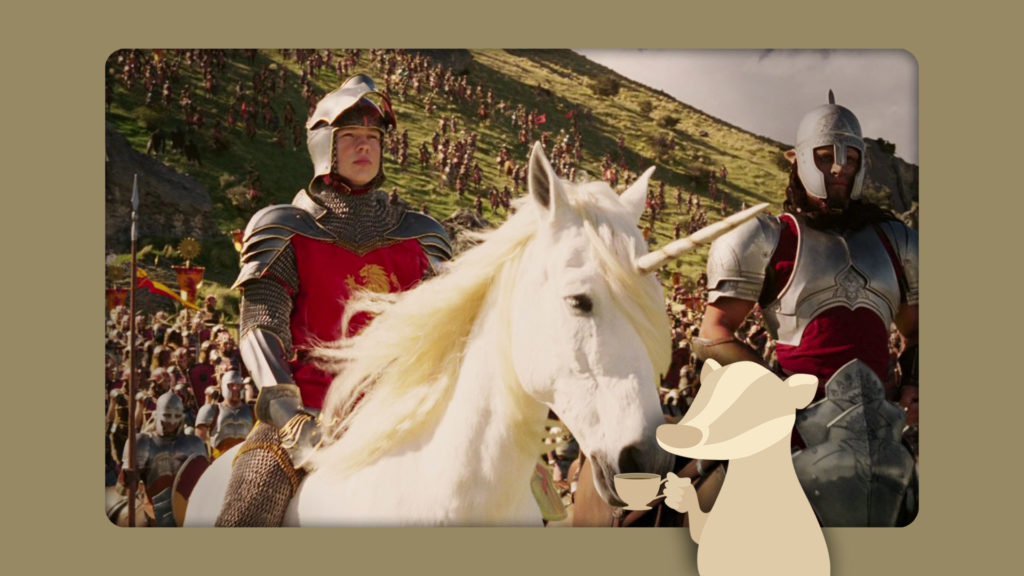
Podcast: Play in new window | Embed
In The Chronicles of Narnia books, riding a talking beast is a cultural no-no, except perhaps in extreme circumstances. But, there are a few scenes in Disney/Walden’s movie adaptations that may not be entirely consistent with this. In this episode, the podcasters focus on Edmund’s horse “Philip” and Peter’s unicorn, and examine whether this notable cultural aspect of Narnia was translated to the screen… and why it matters.
- Discuss this in The Narnia Facebook Group.
- Support this podcast and receive exclusive benefits.


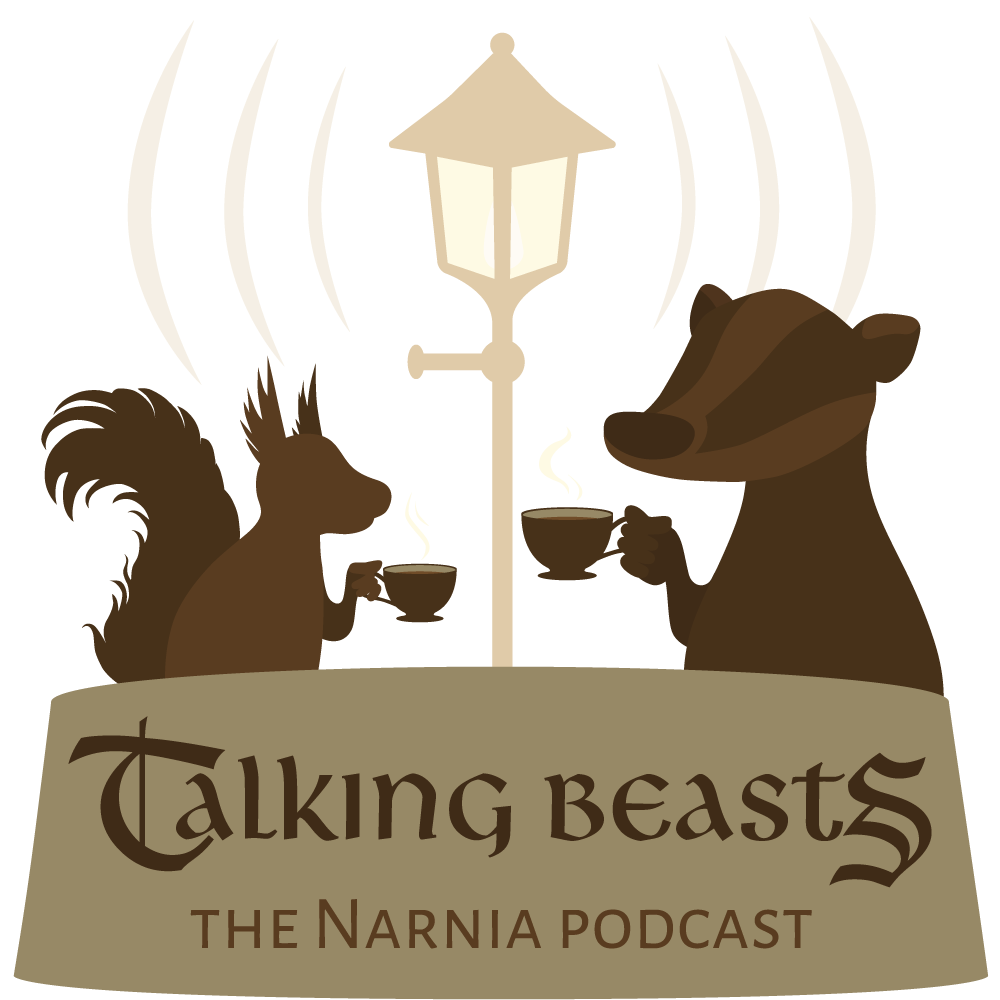
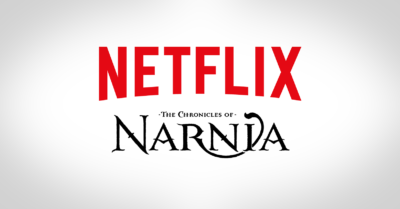
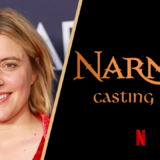
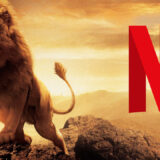

Loved this episode. It is super nerdy!
I cringe when I see Phillip talking. It is poorly written, and you’re right, it does feel like a cheap laugh.
I never thought about Phillip in the final scene of the movie. You make a lot of sense when you say that he seems like a dumb beast for the rest of the scene.
It bothers me greatly that Peter is riding a unicorn, and I believe that unicorns in Narnia are all Talking Beasts. I believe unicorns are noble and sophisticated, beautiful creatures. You put words to my thought that it is a cool thing that Jewel is a male unicorn.
I believe that Matthew Aldrich should plan to have a lot of consistent continuity through the 7 stories and any apochryphal additions. I do hope that the older Pevensies are well-cast, for both the final scenes of LWW and in The Horse and His Boy. It would be neat if the actors from the Walden movies play the adult Pevensies in Netflix’s shows, but that would only work if the children cast for the young Pevensies resemble the Walden actors. The reason why I think that is a good idea is that it will bring some continuity to the 21st century Narnia screen adaptations. It will be complete fan service too! And it makes a bit of sense to cast familiar faces rather than new actors.
There are many things that need to be considered during adapting the Narnia books as a whole series.;
_ Dumb/talking beasts, as you mentioned.
– Actor playing Tumnus in LWW/HHB.
– Culture of Telmarines into the Caspian X era. Does restored Narnia look like Telmarine costumes and buildings?
– How do you manage the size of Aslan after he says he will look bigger to Lucy as she gets older? The Walden movies failed with this one big time. Aslan is the size of a hippo in PC, but is back to normal size (or a bit smaller than in LWW?) in VDT. Actually, now I come to think of it, Aslan looks bigger in the scene after Lucy’ s dream, than when he shows up at the beach at The End of the World.
– Keeping the same actor for Eustace!
Shift and Puzzle find a lion skin in Caldron Pool. Was that lion a dumb beast?
Great episode!
So it never bothered me hugely that Philip spoke. I was just kinda like “wait…” but I didn’t give it much thought. The same goes for the unicorn.
Speaking of unicorns, I don’t think the presence of a unicorn in the movie is a huge problem at all; if you reread the scene where they meet Aslan in LWW, among the creatures with Aslan is a unicorn! (I’d assume however that any consort of Aslan would be a Talking Beast, which would be the only potential problem with the movie. )
A side note: female unicorns weren’t a stereotype in Lewis’ time (thanks to the absence of a certain insipid TV cartoon). Medieval legends and artwork almost invariably depict them as being male, especially on heraldic crests.
If you’d like to see a Last Battle cover without Jewel, try the Collier version. They’re probably the weirdest covers of any Narnia books, but it doesn’t have Jewel!
Usually talking beasts would be recognized as different from ordinary animals. I think Lewis said they were generally larger and looked more intelligent. This was not understood by the people who made the movie, although it was for just a brief moment. I think Edmund should have known that Phillip was a talking horse since it was close to the end of the story, and at that time he had some experience in Narnia. 🙂
Great episode. I liked how you guys talked about how the problem with Philip isn’t just that Edmund rides him. It’s the way that he and the other Pevensies’ horses (in the last scene) aren’t treated like characters. Philip only talks when it’s for a punch line. He doesn’t really react to anything (like the lamppost) in a non-horse way.
I’m not sure if the moviemakers can be defended on the grounds that LWW doesn’t mention there are nontalking animals. In the coronation scene, they mention, for example, that the Narnian sea is in the east and the border is on the south. So it seems like they skimmed the other books for details to include. It’s a bit disappointing they couldn’t have remembered this detail to include.
I, myself, am able to justify Peter riding a unicorn by imagining there are nontalking unicorns in Narnia. But I can understand why some people, like Coracle, feel that unicorns should be treated as special as a rule. You can argue that C.S. Lewis meant for that. (When describing Fledge, he says that “even a unicorn might feel shy in his presence.) But you can also argue that he didn’t. It could go either way.
I’m not much a Star Wars fan at this point in my life. I consider the original three Star Wars movies good but there aren’t any I’d particularly call great. (I actually think The Empire Strikes Back is weirdly overrated.) In my more cynical moments, I think that the reason they became so popular is that there weren’t many similar movies when they were first made. Now that every Marvel movie is trying to be like Star Wars, with a similar good vs evil adventure fantasy/scifi story and a similar sense of humor, they don’t stand out much anymore. (I think you could even argue that the best of modern popcorn movies are as good or better than Star Wars.) The flipside of that though is that there aren’t any Star Wars movies I actively hate. I can agree with most of the criticisms against the prequels and sequels (though, like Glumpuddle, I haven’t actually watched all of the latter yet) but I don’t find any of them unwatchable, even if there’s not much reason to watch them more than once. I’d even argue they have elements that are improvements on the original trilogy ( though the original trilogy is the most consistently competent/coherent) or at least had interesting new ideas for the mythology. I guess it’s a franchise I can’t get excited about either way.
In fact, it was actually interesting to me to realize when The Force Awakens was coming out and everyone was talking about how great it would be get new Star Wars movies, ones which harkened back to the originals rather than the prequels, that I didn’t particularly want another Star Wars movie like the originals. (No, I’m not saying harkening back to the prequels would have been an improvement.) I didn’t expect the new movie to be bad. Neither had I come to dislike classic Star Wars. I just didn’t need any more of it. On reflection, I decided that this was because I don’t find the world of the originals very visually appealing. I mean some of the designs for the robots and aliens are cool but the clothing is all white, black, gray or brown and every planet is an inhospitable wilderness. I don’t really get why people would fantasize about living in this world. I prefer more colorful and inviting imaginary settings like Narnia. #not a science fiction fan
I think Star Trek is more thoughtful than Star Wars because like Narnia it has better characterizations and deeper stories. I agree with you, Glumpuddle. I think it is better. C.S. Lewis would probably have liked it too if he were alive today (even though he would have disagreed with its humanist philosophy). 🙂
I think you’re correct with medieval unicorns being depicted as male generally, like the Hunt of the Unicorn tapestry has a male unicorn I think?
If anything, I think it’s cool that Tirian is best friends with this delicate, beautiful creature that 1) usually is depicted as only accompanying pure damsels and 2) is almost indomitable in the battle field! I like to imagine that Lewis was like, “yeah, you know how unicorns use their horns to heal people? Well in my book I’m gonna have them weaponize them like spears!” 😛
Oof yeah Walden didn’t handle Aslan growing well in my opinion.
Personally I think there would be non-talking unicorns because if there are non-talking dragons (Dragon Eustace vs the Salamanders in Bism) which in most cultures are witty and loquacious, or non-talking lions (which in a way almost seems like it would be sacrilegious to Narnians, what with Aslan being the Lion) a “normal” unicorn seems within the realm of possibility.
I think in LB Lewis says something like, “Indeed it was a dumb lion, a hunter had killed upstream” or along those lines? Even so, I don’t think it would be lucky or wise to kill a lion, even a dumb lion, when in Narnia.
Also, it always struck me as odd that Tirian had never seen a lion, talking or dumb, before. Like lions had almost become a mythical creature in Narnia?
Maybe I’m reading into this, but I thought the fact that the kids ate fish in Narnia with the Beavers was an indication that there were non-talking beasts in Narnia? That and Tumnus makes Lucy tea with buttered toast and soft boiled eggs and sardines (is there ever a mention of a talking cow or chicken in Narnia???)
As for books with talking and non-talking animals, would His Dark Materials count? It’s not totally the same since the dæmons are an extension of themselves, but there are the similar taboos of “you do NOT go up and pet someone’s dæmon” (or in Narnia, a talking beast). Also, the dæmons are immediately distinguishable from normal animals by both the humans and the regular animals, something that is mentioned Narnia (I think there’s a line in PC where they say, “He didn’t doubt for a second the squirrel could speak” or something)
To those who have watched His Dark Materials, do you think they did a good job with the dæmon’s expressions/personalities?
Yes, I do think it’s funny that it seems like the planets are all one habitat (desert world! ice work! etc) while the 1 known planet with life is extremely diverse.
While I don’t agree that recent Marvel movies are *trying* to be like Star Wars, I do see what you mean with them involving more spacey-ness/grand scale (but I really liked Ragnarok/Infinity/Endgame, so that didn’t really bother me) I also think that yes, some of the recent stand alone movies had not-super-great humor, but (in my opinion) they were weaker storywise as well (i.e. Antman and the Wasp didn’t work for me, but Spiderman Far From Home did)
However, I am looking forward to the 2 directions Marvel seems to be heading: the more corporate espionage, SWORD, Winter Soldier vibe (Falcon and the Winter Soldier can’t come soon enough!) and the crazy, multiverse, Dr. Strange vibe (Wanda Vision can’t come soon enough either!!)
Phew, okay sorry for the long, non-Narnia related comment, stay at home order has me chomping at the bit for social outlets lol
In another world, Will Poulter would make a perfect King Edmund to BBC’s Edmund. 😉
I thought the line by Phillip was played for a joke. In the theater, I remember that people laughed, so I guess that’s why they did it, and they probably didn’t want to spend a lot of time explaining that talking horses are only ridden in Narnia during battles. I didn’t like it that Edmund was riding a talking horse because of canon reasons.
As for why the horse acted the rest of the time like a dumb animal instead of a talking animal, it was probably because budgetary reasons would reduce animation available. And I imagine that from a live-action point of view it would be hard to train a horse to make expressions… However, there was a behind the scenes episode about Aragorn’s horse in The Two Towers. Apparently the horse was a natural actor and was always centering himself in the middle of the screen.
Well, I didn’t mean to accuse any recent Marvel movies of ripping off Star Wars, any more than any franchises in the same genre as another franchise can be accused of ripping it off. I just suspect that Star Wars might not stand out as special to future generations the way it’s done to past generations because of so many similar and not IMO particularly inferior movies. (I get it. Lockdown has made me restless too.)
Great conversation, you guys. Great topic. I really enjoyed listening to it. This hit on one of the main reasons I just can’t get myself to love the Walden film. I certainly like aspects of the movie, but I feel there is a consistent lack of understanding about the world of Narnia throughout it. Usually when an awkwardly crammed-in joke appears (i.e. “My name is Philip.”).
I really liked your analogy about how Philip didn’t seem to be a real character, just a sort of robot that spoke sometimes. The talking animals in the books aren’t just animals that can talk; they clearly have souls, they have a relationship with their creator, there are expectations on how they ought to behave. Even when I first saw LWW back in 2005, as a much younger and more forgiving fan, I couldn’t make sense of why a Narnian horse would be named “Philip” (in contrast to Bree or Hwin). Or why he would have an American accent. Or why he still serve as Edmund’s steed on frivolous hunts. I really do hope the Netflix production (if it happens?) will make an effort to adhere to the books’ worldbuilding and continuity.
This seems like one of those nerd conversations where you just roll your eyes. Not every detail is really worthy of being fleshed out. Some animals can talk and others can’t. Lewis gives some explanation in The Magician’s Nephew but its not fleshed out in detail. You don’t know which creatures are talking or not. The mice couldn’t apparently talk until after they helped Aslan cut his ropes. We don’t know if the Witch’s reindeer can talk or not. We also see countless examples of riding talking beasts in the books and its always at the discretion of the individual animal. With the boys going to fight in battle it makes sense to me that Edmund would train with Philip and ride on his back. And it doesn’t surprise me at all that they placed him in the closing scene. The book specifies that they rode after the stag but it doesn’t specify or give any personhood to the horses. We have to remember that the LWW was written before Lewis introduced much of his later rules on which beast can talk and which can’t.
Okay… I think I get what you meant? Like, Star Wars was kinda the first franchise/movie series [other than like the Bond films or maybe Indiana Jones] but now there’s a lot of action/adventure/sci-fi series going on (MCU, DCEU, Fox X Men, Sony Spiderverse, even Jumanji in a sense) which almost waters down the ‘specialness’ of Star Wars? (especially if some of the franchises are doing as well or better than SW)
I guess similarly LOTR won’t be as special in fantasy movies/shows because of Narnia, GoT, the Witcher, and Harry Potter’s [varying] successes?
I really enjoyed this episode!
I was never really bothered that Edmund rode a talking horse, but I did watch the movie before I read the book. After reading the LWW and the rest of the series, I learned where the movies made mistakes. And yet, I’m still not completely bothered by this. Yes, it is annoying that Philip only speaks twice in the movie, the rest of the time acting like a normal horse. But I think if I had read the books before I watched the movie, I would dislike this more than I do.
So did you actually listen to the whole episode? Because if you did, I’d expect you to understand why the fandom cares and not come across as so ignorant.
While C. S. Lewis didn’t have the whole Narnian mythology in his head when he wrote LWW, the director and screenwriters had access to seven whole books about it. I think it’s reasonable to hold them to a higher standard.
While the books portray talking equine creatures, like, Jewel, Fledge and Bree, being ridden by humans when the plot calls for it, they’re always portrayed as being active participants in conversations and having minds of their own. You wouldn’t find any of them just staring at the ground while their riders all dismounted them to stare at and talked about a mysterious lamppost, or ran off into the thicket and never came back.
1) I watched LWW when I was 7 and I hadn’t yet read the books, so honestly, I’ve always thought the Philip joke was funny. I thought it was HILARIOUS back then, and now I just enjoy the sort of inside joke it offers. I certainly see the plot inconsistencies it brings up, but it doesn’t bother me. They never made it to HHB, so no harm done. I also don’t think it was just a cheap laugh. I’ve noticed that people tend to get annoyed at the jokes the movies attempt, but if you remember, C.S. Lewis had a few jokes himself (there’s an entire chapter in MN dedicated to the first joke. And Uncle Andrew literally is a joke). The “I left my torch in Narnia” is also from the books. So I think that jokes have a place in Narnia, and if it weren’t for the fact that it is coming from a talking horse and Edmund should have known he was riding one already, I think the line would have fit in the books as well. I mean, the first thing Bree says to Shasta is “But I can talk”. The two moments are very similar (of course, Bree was consiously hiding his ability).
2. I always just assumed the Unicorn couldn’t talk, because he never does. He also doesn’t LOOK like a talking beast. Other beasts in the movie don’t talk, but give you the feeling that they could if they wanted to by emoting and such. I just assumed the Unicorn couldn’t.
Great podcast, thanks!
I agree that the “My name is Phillip” scene comes across as a cheap laugh, really. It’s amusing in the context of the film, but it does raise a whole lot of questions about talking animals that the film just doesn’t answer — and as you both made clear, it’s very inconsistent with what we know about Narnia, specifically about Narnia’s talking (and non-talking) beasts.
I get the impression that the film-makers hadn’t read all seven books before beginning LWW and didn’t have a very clear idea of how to portray talking animals in Narnia — as you say, there’s a whole “cultural” background to them that the two “Phillip” scenes just don’t seem to fit with. They definitely don’t seem to have read The Horse and His Boy!!
One way I can think of that could have allowed them to make much the same joke but make it more “Narnian” would be if, at the start of the army scene, another of the Narnian characters escorted the unicorn and the horse to Peter and Edmund and told them “These will be your mounts.” Then perhaps Edmund could tentatively approach the horse with a “Good horsey…” kind of comment, only to have the horse reply “My name is Phillip” — BEFORE Edmund tries riding him. THAT would have made perfect sense and given some real depth to the scene, as Edmund commits a Narnian cultural faux pas and is corrected — as soon as he meets Phillip, not at some random moment while riding him where it’s implied he hadn’t even realised before that he was on a talking horse!! And then of course there’d need to be a little bit more interaction with Phillip — and preferably some of the other talking beasts in the army — during the subsequent scenes, just to show clearly that these really are sentient and highly intelligent beings with their own cultures and rules and standards, and you do NOT ever treat them like “dumb beasts”. That’s what’s so un-Narnian about the whole Phillip thing in the film, as the podcast brings out. There is no way that Edmund would have been able to ride a real Narnian talking horse without realising that this was a talking horse AND he has a mind of his own and will speak it, quite literally!!!
As for Peter riding a unicorn, I felt that too was shoved in as, well, almost tokenism — “Ooh, this is Narnia and Peter’s going to be the High King, so he’d better have a really really special mount, better than what Edmund’s riding. Um, er, Narnia has unicorns, doesn’t it? Right! If Edmund is riding a talking horse, Peter has to ride a unicorn!!” It’s just a bit silly, because, even more than a Narnian talking horse, a unicorn (going by Jewel’s example) is another creature that you would NOT even attempt to ride without that creature’s express permission. We’re never told whether there are non-talking as well as talking unicorns in Narnia, but given that unicorns are seen as such magical creatures in our own world, I would be surprised if any of the Narnian ones were non-talking. But in the film of LWW, we have Peter riding a unicorn, for no apparent reason other than that it looks good, and the unicorn shows no signs of being able to talk, whereas Edmund’s horse does talk. If Peter’s mount is supposed to be superior to Edmund’s, why isn’t he (Peter) riding a talking beast as well? Like I said, it feels like they were trying to go for something impressive but they never really thought it through properly, so it just doesn’t quite work.
This discussion has made me hope more than ever that since Netflix has bought the rights to all seven books, their directors/producers/writers will all sit down and read all the seven books carefully and thoroughly BEFORE they do anything else, and make some really clear notes on things they need to be aware of about the “Narnia universe” before they even start writing scripts, let alone filming. All kinds of aspects of Narnia’s geography, culture, history, the whole “feel” of the place that they want to get across… they really need to have that clear from the start AND make it consistent across all seven films/serials, so that we can believe in this as a real and amazing world and we don’t get any awkward and inexplicable moments like the “Phillip” incident!!
I’m not a Star Wars fan, so won’t comment on any of that part, but great job, guys. 😀
Ooo I like your idea with how Edmund was introduced to Phillip:)
I also agree with the unicorn probably being “Well Peter’s high king right? He needs to be more special!”
Incidentally, I’m rather annoyed that the unicorn just looks like a white horse with a sketchy horn on its head (almost kid’s birthday party unicorn). I hope in LB they portray Jewel as the more the “mix of creatures” unicorn i.e. deer like body, lion’s tail, horse like head, silvery white, etc
Weirdly enough, in the early draft of the script available to read online, the Philip situation plays out pretty similar to what you suggested. The unicorn also talks in that version. (I know you’re not a fan of the movie but I thought maybe you’d find that an interesting bit of trivia anyway.)
Ah, now that’s interesting — thanks for the trivia! I wonder why they changed it? Perhaps they decided they didn’t have much time to waste on talking animals that aren’t major characters and so they cut it down to the two brief lines from Phillip, without stopping to realise that this weakens the film’s portrayal of a very important aspect of Narnia.
To be fair on the movie, I thought it was really good and beautifully done just from a cinematic standpoint, and it is faithful to the plot of the book overall — it’s just that there’s too much in there that, for me, makes it not really feel like Narnia, including details like what we’ve been discussing. I also reckon their portrayal of Aslan (the most important element of all) was completely off the mark, but that’s another matter! 😉 But it’s interesting to hear about what might have been done differently.
Totally agree about the portrayal of the unicorn — it’s too obvious they’ve just taken an ordinary white horse, probably brightened it up digitally, and added a fake-looking horn. I also hope when (if?) Netflix gets to The Last Battle, they’ll portray Jewel as more like unicorns in medieval illustrations, as Pauline Baynes does in the book. (Incidentally, a couple of times in the Chronicles, Lewis describes the horn of a unicorn as “indigo” (LWW, when Aslan brings the statues to life) or “blue” (LB, when we’re first introduced to Jewel). I wonder where he got that idea from? I don’t think I’ve ever seen a unicorn with a blue horn in any depiction, ancient or modern!)
I do find it troubling that Philip only has the two lines, but I do have to question the assertion that it is odd that Edmund would be riding Philip in the last scene. In SC, Eustace is surprised to see that the giants of Harfang apparently hunt on foot, and Puddleglum explains that it must be because there are no horses large enough to carry them. This means that hunting on horseback must be customary in Narnia, as it is in our world; if it were not so, we would expect Puddleglum to ask, ‘Why shouldn’t they hunt on foot? Isn’t that how hunting is usually done’, rather than immediately offering a possible explanation. Obviously, it could be that they hunt riding dumb horses, rather than talking ones, but this raises the question: if there are enough tame, dumb horses to be ridden in a hunting party, why would you ever ride a talking horse under any circumstance? *Especially* into battle, where the talking horse’s ability to fight would be severely hampered by carrying a rider, and the rider’s ability to fight would not be meaningfully boosted beyond that of a soldier riding a dumb horse. Far better to put the rider on a dumb horse and allow the talking horse to fight as an individual.
I have the Collins version of the series and the cover of LB has Tash not Jewel. I don’t know if this was a wise decision because a bird monster thing could put some people off reading the book.
Interesting… I can see what you mean, but also, if you have a pair fighting as one, you have twice the amount of eyes to watch your enemies with. In HHB it’s clear Bree is light years ahead of a regular horse’s intelligence which makes him less likely to just throw a rider, easier for them to communicate their intentions, etc. If you specifically trained with a certain horse for years, I’d think you could be as/more affective than a Centaur
(side note, I saw an interesting idea of centaurs kidnapping humans and forcing them to ride into battle, acting as look out and perhaps defending the centaurs blind spots, shooting/blocking arrows while retreating, etc)
If I was asked to write a script about Peter and Edmund being given horses for the battle, I think I’d have:
Ed (quietly) : Peter, do you think these are Talking Horses?
Peter (quietly) : Ask them!
Edmund : Er, excuse me, horses, can you speak?
(No response from horses)
This would show very simply that some beasts talk and others do not.
The unicorn was beautiful but why not just have Peter ride a normal white horse (as ridden by hero characters, Lone Ranger, Gandalf, etc) ? I also don’t like Ed saying ‘Horsey’ to his mount – it’s just silly for a boy of 12..
That was funny
That was really funny
One fantasy “series” that directly deals with the difference between talking and non-talking animals is Oz. At least in the book and Musical, Wicked. One main plot point is that the Animals are slowly losing their ability to speak and reason and are turning into animals. The are able to differentiate between Lions and lions, Goats and goats, Owls and owls etc. Reading the book it always made me think of Narnia and I imagine that happened over time with the talking beasts. They became complacent and lost their abilities to love, think, and talk.
I always assumed the horse Edmund was riding was named Phillip because that’s a Greek name meaning lover of horses.